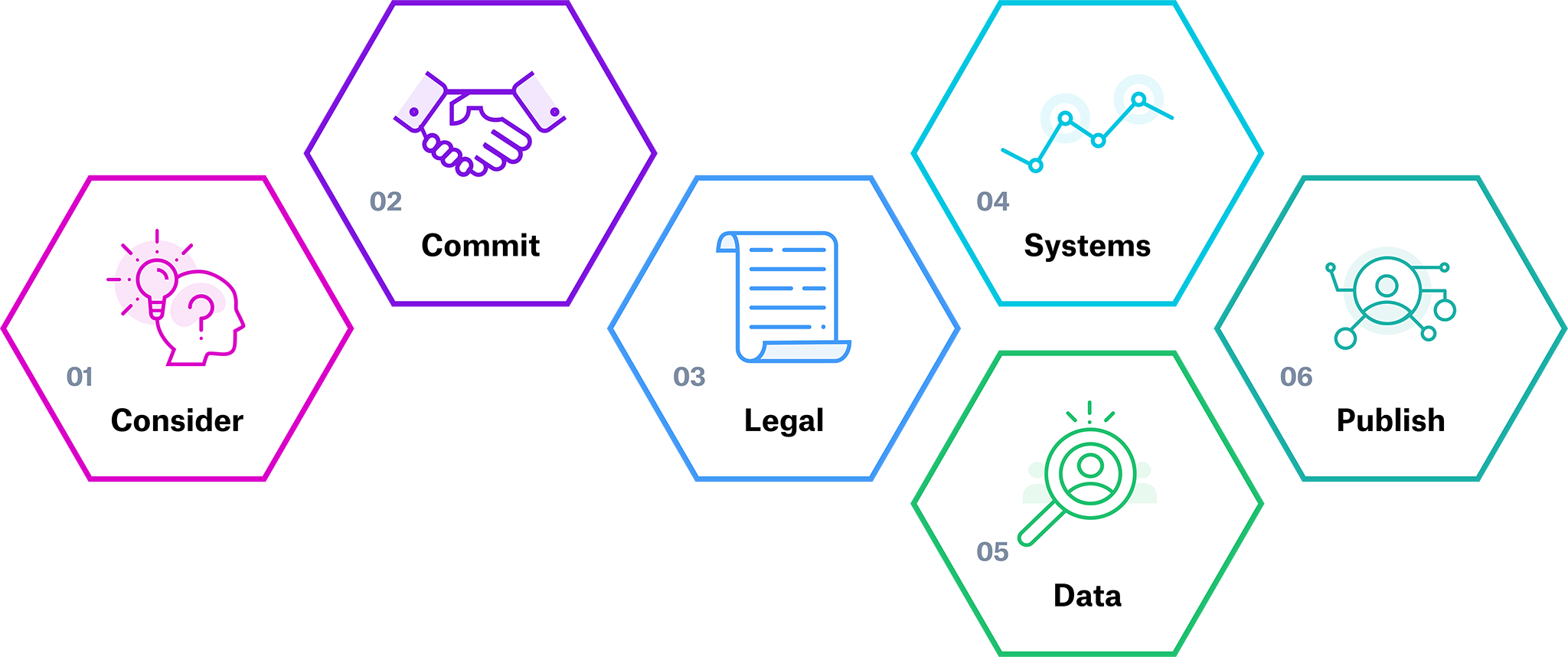Effective consultation processes for beneficial ownership transparency reform
Introduction
Open Ownership’s implementation guide sets out six common elements of beneficial ownership reform:

- 1. Consider: exploring the different policy benefits of beneficial ownership transparency and models of achieving these.
- 2. Commit: securing buy-in from key stakeholders; making public statements of intent.
- 3. Legal: creating or updating legal and policy frameworks to enable, support and mandate improved beneficial ownership transparency.
- 4. Systems and 5 Data: systems development and data modelling and verification: creating or adapting ICT systems and business processes to collect and provide access to data on beneficial ownership; making sure the right field of data are collected to support priority use-cases and embedding mechanisms to increase data quality.
- 6. Publish: sustainable provision of openly licensed data according to a common standard.
At each of these stages, consulting with key stakeholders can be critical to:
- Understand different user needs
- Identify potential pitfalls and challenges early on
- Find the connections between beneficial ownership disclosure and other issues such as public procurement or promoting inward investment
- Harness expertise from outside your organisation
- Build awareness of disclosure requirements and seed changes in behaviour that can support compliance
- Fulfil formal requirements for consultation
Each stage of the implementation cycle will require consultation and a thoughtful and tailored approach. An important question to consider throughout implementation is who will be affected by the decisions made. Ensuring there is a well-articulated answer to this question should lead to effective decision-making on which people or groups must be involved to ensure accurate disclosure.
When identifying which stakeholder groups to involve, implementers should be guided by the policy goals that are being sought through beneficial ownership transparency. In general, stakeholders should include other government actors across different levels and agencies, civil society and private sector actors. The level of engagement with specific stakeholders in each group may vary according to the scope of reform, for example: where reform is targeted at companies in particular sectors such as extractives; at companies that are contracting with governments; or where reform is at sub-national level.
There is an understandable tendency in government to limit public communication to major policy announcements or occasions when there is a clear policy direction to communicate. Good consultation will have regular communication about a range of different parts of the project, so finding channels (e.g. blogs and social media) that demand less formal communication styles may be important to allow the project team to talk frequently about their work and keep everyone up to date.
Principles for good consultation and engagement
Good documentation
Throughout the process, documenting the inputs from different stakeholders, as well as keeping a good record and publishing updates on the progress of work and what has been learned, is essential to keep everyone who has participated up to date with progress and to provide a record of how and why key decisions have been made. This documentation will also be important when government officials or ministers change during implementation, to explain what has previously happened.
Maintain a good contact database
The aim throughout each stage of the consultation process should be to build a sustainable community of people interested in the reform who can be called upon to input. Finding respondents can be expensive and time-consuming, so ensuring those people or groups who do get involved can be easily contacted again supports success in the long term.
Develop ways to communicate with the largest audience possible
There is an understandable tendency in government to limit public communication to major policy announcements or occasions when there is a clear policy direction to communicate. Good consultation will have regular communication about a range of different parts of the project, so finding channels (e.g. blogs and social media) that demand less formal communication styles may be important to allow the project team to talk frequently about their work and keep everyone up to date.